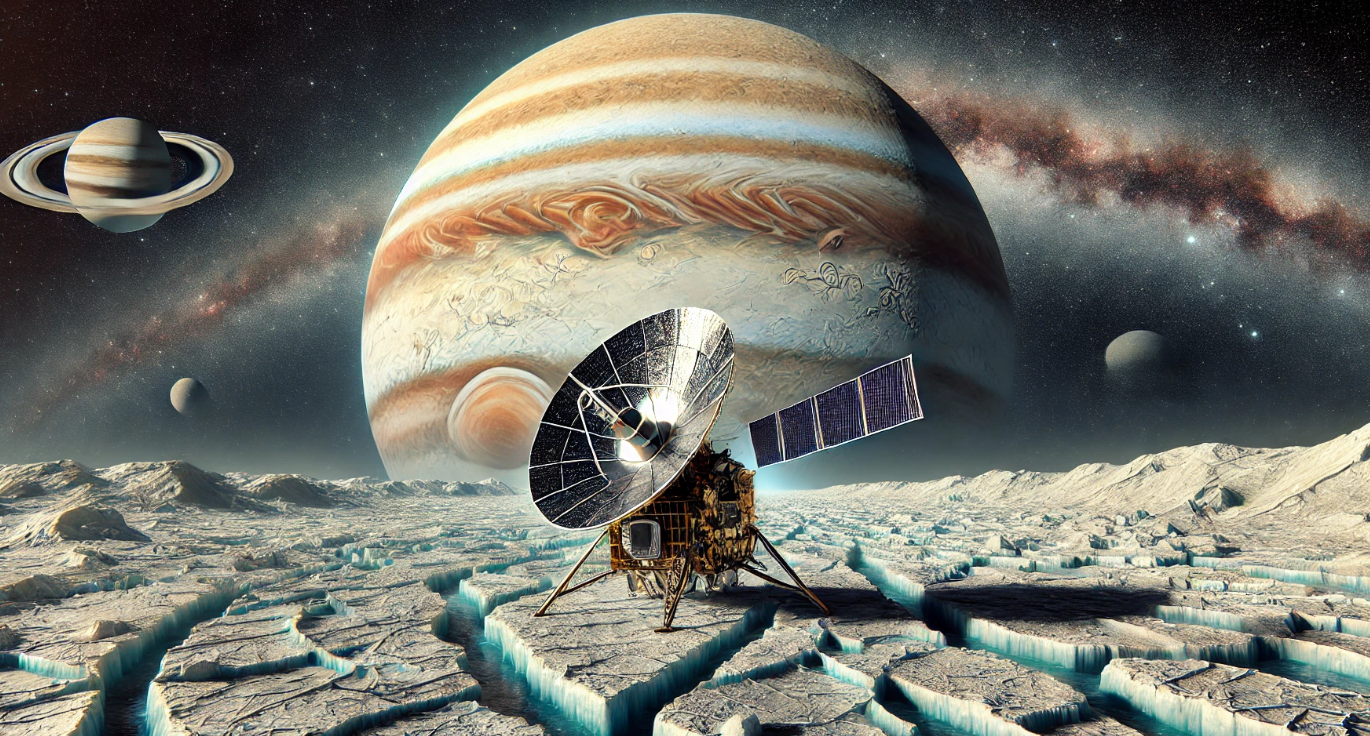NASA’s Europa Clipper mission has set its sights on one of the solar system’s most intriguing targets: Europa, the icy moon of Jupiter. Launched from Florida’s Kennedy Space Center aboard a SpaceX Falcon Heavy rocket, the mission aims to explore the moon’s potential for supporting life, even though it won’t directly search for it. The Clipper’s journey is a testament to humanity’s quest to understand the cosmos and the possibility of life beyond Earth.
- NASA’s Europa Clipper mission aims to explore Jupiter’s moon Europa to assess its potential habitability, focusing on its subsurface ocean.
- Equipped with nine scientific instruments, the Clipper will conduct 49 flybys to study Europa’s ice shell, ocean, and surface composition, seeking to understand conditions for life.
- Europa’s ocean, possibly deeper than Earth’s, sparks scientific interest due to its potential for supporting life.
- The mission, costing $3.9 billion, represents a significant step toward exploring ocean worlds and understanding life beyond Earth.
Various outlets, including Sky News, have highlighted the mission’s objectives, which focus on investigating the conditions under Europa’s icy surface. The moon is believed to harbor a subsurface ocean of salty liquid water, hidden beneath an ice crust that is approximately 10 to 15 miles thick. This ocean, potentially 80 miles deep, has sparked interest among scientists due to its potential to support life.
The Europa Clipper is equipped with nine scientific instruments designed to study the moon’s ice shell, ocean, and surface composition. These instruments include radar for probing beneath the ice, cameras for detailed surface mapping, and spectrometers for analyzing Europa’s atmosphere and surface materials. The spacecraft will conduct 49 flybys over three years, each time gathering crucial data to assess the moon’s habitability.
Standing as the largest spacecraft ever constructed by NASA for a planetary mission, the Europa Clipper boasts a formidable design. With its solar panels and antennas fully deployed, it measures about 30 meters in length and 17 meters in width. These solar panels are vital for supplying power to the spacecraft’s systems, especially given the limited sunlight available at Jupiter’s far distance from the Sun.
The mission, with a budget of approximately $3.9 billion, is set to conclude in 2034. As it orbits Jupiter, the Clipper will also provide valuable data on the gas giant itself and its other moons, including Ganymede, which is also believed to have a subsurface ocean. The European Space Agency’s Juice mission will complement these efforts, arriving at Jupiter shortly after the Clipper.
Europa, one of the largest of Jupiter’s 95 moons, has long captivated scientists due to its potential to support life. Despite being only a quarter of Earth’s diameter, Europa’s global ocean may contain more water than all of Earth’s oceans combined. The mission’s deputy project scientist, Bonnie Buratti, emphasized that while the mission is not designed to detect life, it will explore the conditions necessary for life to exist.
In addition to its scientific endeavors, the Europa Clipper carries symbolic messages from Earth. These include a metal plate inscribed with the word “water” in 104 languages and a poem by U.S. Poet Laureate Ada Limón. These tokens reflect humanity’s hope and curiosity in exploring the unknown.
The Europa Clipper mission represents a significant leap forward in our understanding of the solar system’s ocean worlds. As the spacecraft embarks on its epic journey, it promises to shed light on the mysteries of Europa and its potential to harbor life. By investigating this distant moon, scientists hope to answer one of the most profound questions about our place in the universe: Could life exist beyond Earth?
Europa: Jupiter’s Icy Moon with an Ocean Beneath
Europa, one of Jupiter’s largest moons, has fascinated scientists for decades due to its potential to harbor life. Beneath its icy surface, Europa is believed to contain a vast subsurface ocean of salty water, making it one of the most promising places in the solar system to search for signs of life.
Europa, slightly smaller than Earth’s Moon, has a surface covered in ice, with features like cracks and ridges hinting at movement below. This suggests that the ocean beneath is interacting with the surface, possibly allowing for the mixing of nutrients. The ocean, likely kept warm by tidal forces from Jupiter’s gravity, could be up to 80 miles deep, holding more water than all of Earth’s oceans combined.
NASA’s Europa Clipper mission, launched in 2024, aims to study the moon’s ice shell and assess its habitability. Using radar and other instruments, the spacecraft will probe the thickness of the ice and analyze the composition of the surface and atmosphere. Although the mission is not designed to search for life directly, it will gather data to help determine whether Europa’s ocean has the conditions necessary for life.
Europa’s potential as a home for life has made it a priority for future space exploration. Understanding this distant moon could unlock some of the most profound questions about life beyond Earth, furthering our knowledge of the solar system’s mysterious ocean worlds.





